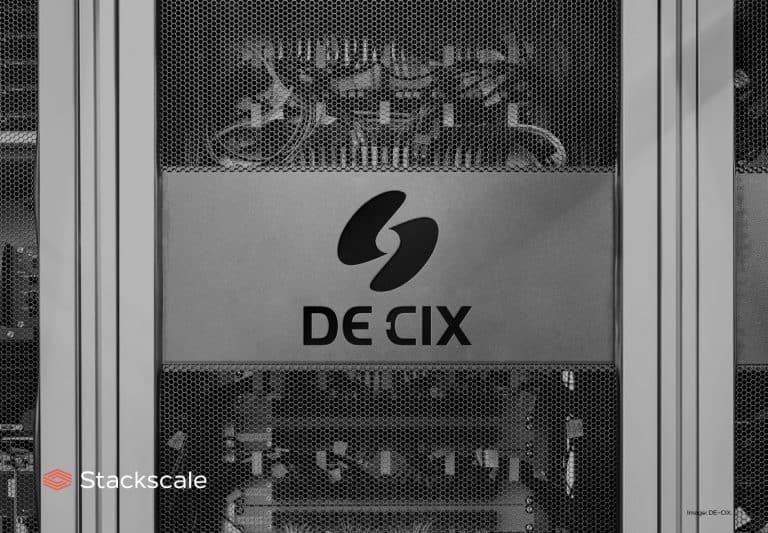Internet Exchange Points or IXPs are a key element of the functioning of the Internet. The Internet has become an essential tool for many people. Thousands of millions of people use it every day for checking their email, visiting their favorite websites and purchasing in eCommerce sites.
Many people know how to use the network of networks. However, just a few people know how the Internet works so that every user can see the information he requests at any moment; regardless of his location. On this matter, Internet Exchange Points are an essential part of the Internet’s infrastructure. So, let’s see what Internet Exchange Points are and how they work.
What is an Internet Exchange Point?
An Internet Exchange Point (IXP) is an infrastructure in charge of connecting the networks of operators and Internet content and service providers. Its goal is to facilitate traffic exchange and accelerate communications by enabling local traffic exchange. Thanks to Internet Exchange Points, networks are interconnected directly through their infrastructure instead of through one or more third-party networks.
As an essential part of the Internet, they are critical facilities that must ensure a high level of security, availability and constant monitoring. A great amount of traffic goes through their networks, so they need to be properly protected to avoid downtime and threats.
How does an Internet Exchange Point work?
To understand how Internet Exchange Points work and their importance on current connection speeds, it would be convenient to put oneself in the user’s shoes while he uses the Internet.
When a user is in front of a computer or any other device connected to the Internet and he launches a request to visit a website, that request creates a data package that travels to the server where the data is located. This machine processes the request and returns the information.
The problem is that the ISP does not always have a direct connection to the server that must return the requested information. When this happens, the package must be able to find an alternative path to arrive at its destination.
That is when Internet Exchange Points step in. They are in charge of providing this alternative route. Therefore, the package will go through one or several IXPs until it arrives at its final destination.
Exchanging traffic through peering
The most common way to exchange Internet traffic is through “peering”. By connecting to Internet Exchange Points through peering agreements, companies only need a wire to interconnect with the IXP to reach diverse points and services, instead of multiple wires.
Peering is an interconnection of Internet networks that agree to freely exchange traffic. To do so, they simply pay a fee to the Internet Exchange Point to leverage its connections. As we mention below, this allows all parties to reduce costs and improve latency and bandwidth usage, among other benefits.
Main advantages of Internet Exchange Points
Using Internet Exchange Points is highly beneficial, but the most important advantages are: cost reduction, latency and bandwidth improvements, and an increase in routing efficiency and fault tolerance.
Cost reduction
Thanks to this type of infrastructure, the traffic share that an ISP must deliver to its connectivity provider diminishes; and so do the costs. The traffic that travels through this infrastructure is not usually billed by any of the parties; as opposed to what would happen with the network of a connectivity provider. Instead of paying for every byte, they only pay a connection fee.
Latency and bandwidth improvements
This direct interconnection also prevents data from having to travel from one city to another (or even outside the country or the continent) in order to go from one network to another. Thus, reducing latency. However, that is not all. Speed and reliability increase significantly, especially in areas where long-distance connections are not very developed.
Moreover, Internet Exchange Points considerably improve bandwidth between the clients of two neighbor ISPs within the point. Since it is possible to leverage the available bandwidth using local resources. In addition to enabling alternative routes through another network in case of failure.
Internet Exchange Points around the world
The list of the world’s Internet Exchange Points is long. There are more than 150 IXPs distributed all around the world. Some countries like the Netherlands, Spain, the USA or Germany have several IXPs.
The first IXP in the world was the Commercial Internet eXchange (CIX). This early IXP allowed TCP/IP traffic exchange between ISPs.
Let’s see some of the most important IXPs in the world nowadays.
AMS-IX
The Internet Exchange Point AMS-IX (Amsterdam Internet Exchange) was created in the 90s as a non-profit organization, with its headquarters in the capital of the Netherlands. It currently interconnects about 800 networks and offers IP exchange professional services. Thanks to which it can offer stable, fast and cost-effective Internet services.
It also stands out for hosting the first mobile connection points worldwide: Global GPRS Roaming Exchange (GRX), Mobile Data Exchange (MDX) and the first interconnection of IPX networks (Inter-IPX).
DE-CIX
The Internet Exchange Point DE-CIX is considered one of the IXPs that carries more traffic worldwide and it is located in Frankfurt. Most of the emails, videos and other information that is transmitted in Germany goes through its facilities. At peak times, the data transfer volume can exceed 10 Tb per second.
This Internet Exchange Point was founded by three ISPs in 1995, which decided to establish an IXP in the back of a post office building in order to improve latency; since the exchange was done in the United States back then. Apart from Frankfurt, DE-CIX has IXPs in Hamburg, Munich, Madrid, New York, Dallas and Marseille, among other locations.
ESpanix
The Internet Exchange Point ESpanix is the most important IXP of Spain and it is located in Madrid. A great quantity of ISPs connect to their infrastructure to exchange traffic. It transfers more than 800 Gbps, on average.
ESpanix has been hosted in the Banco Santander’s data center since 1997, where it has its own 100m2 room; which can only be accessed by authorized staff. It also has transmission equipment in the main data centers of Madrid. From those locations it is possible to access all of ESpanix’ interconnection services.
LINX
The Internet Exchange Point LINX, short for London Internet Exchange, is one of the largest IXPs in the world. LINX is a non-profit organization, created in November 1994 by five UK-based Internet service providers. By 2000, it had already reached 100 memberships, coming from 16 different countries.
As of 2023, LINX has more than 950 memberships coming from more than 85 countries worldwide. It is known for its robust, reliable and extensive peering network. The IXP provides a growing number of interconnection services, support to new members, etc.
You can view the Internet Exchange Points distributed around the world in this Internet Exchange Map.
Dutch version: Internet exchange points, cruciale knooppunten op het internet.




